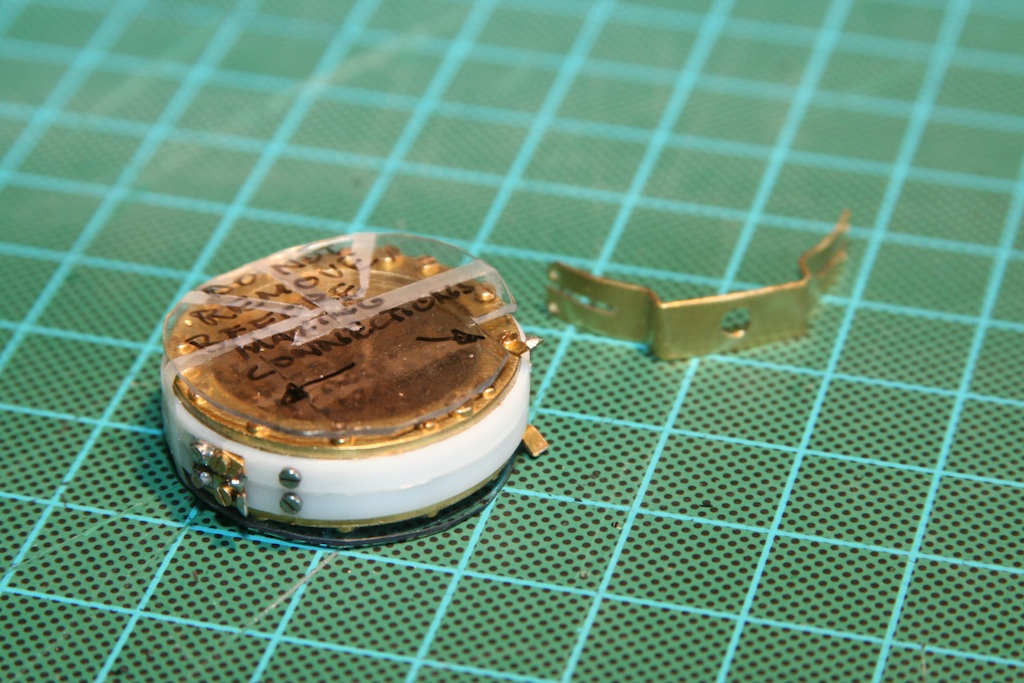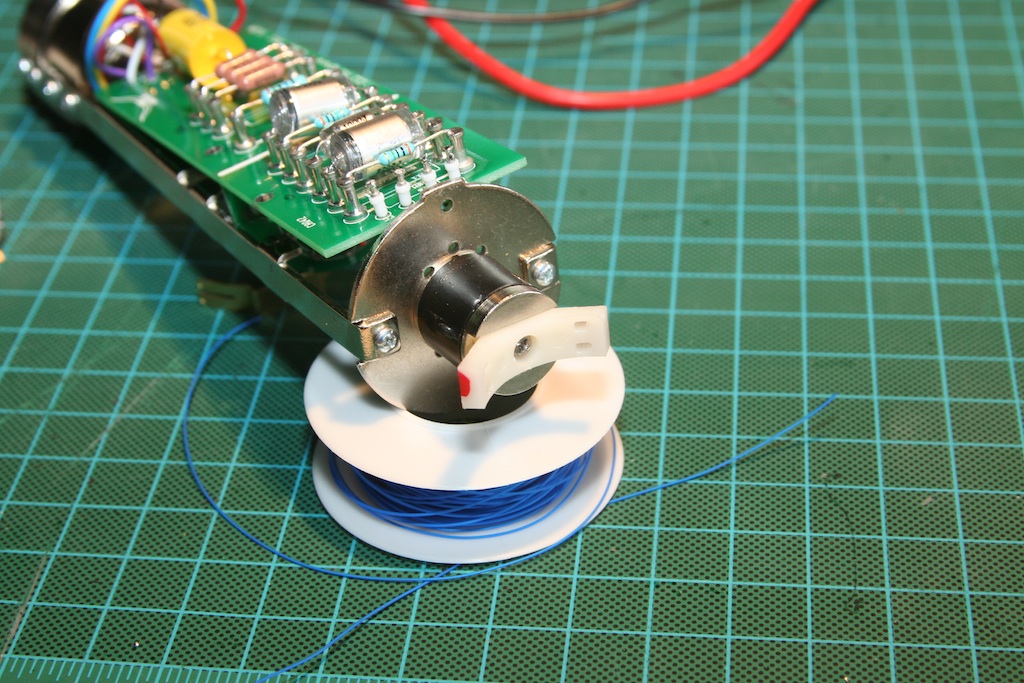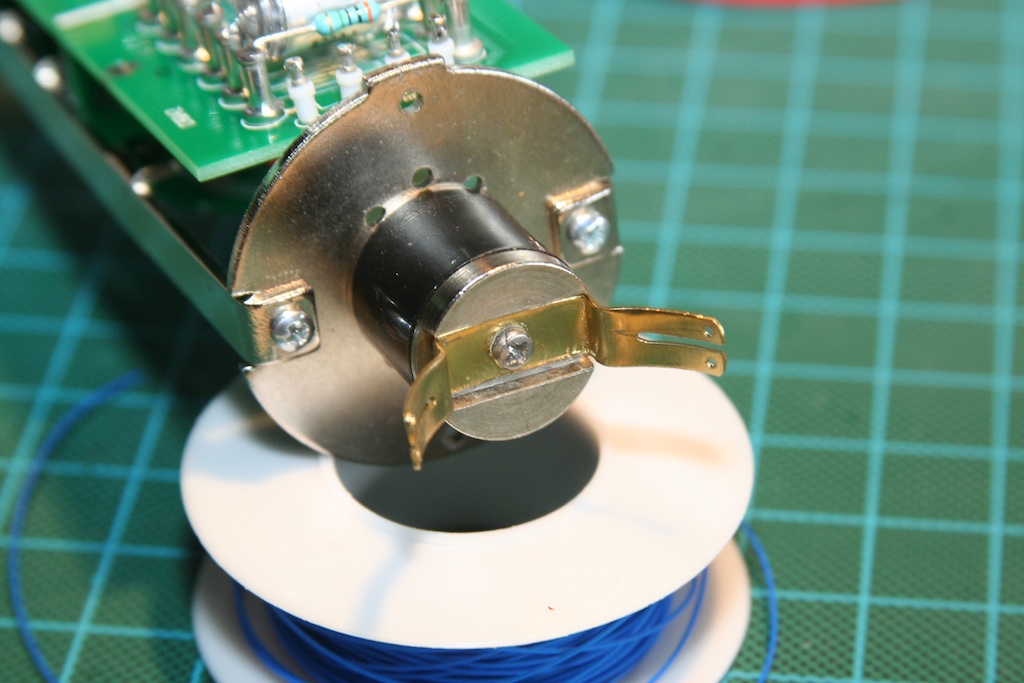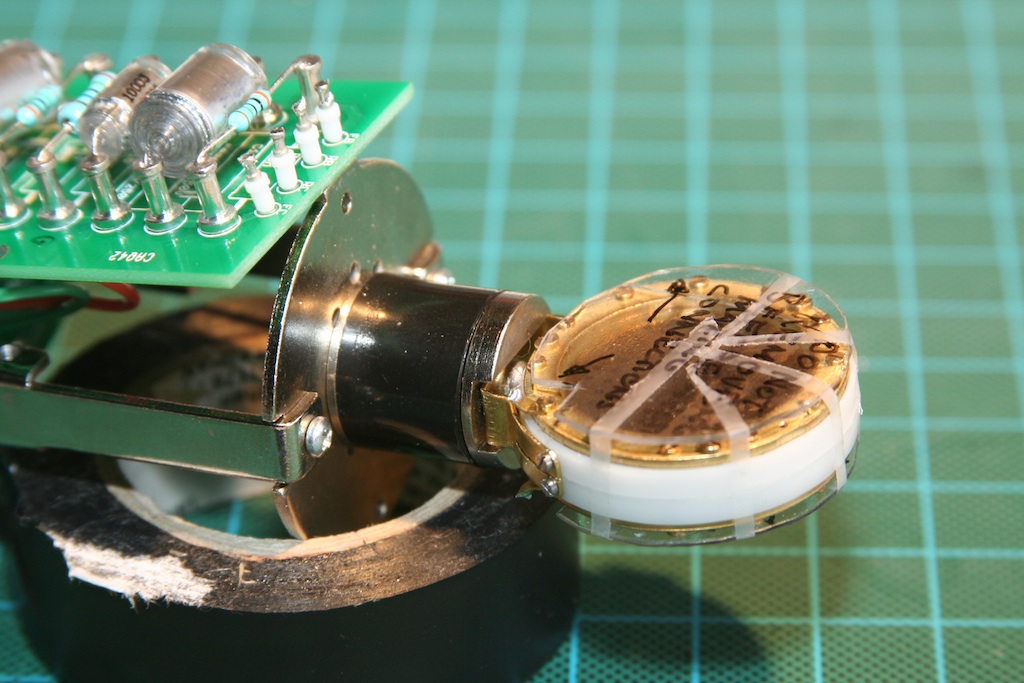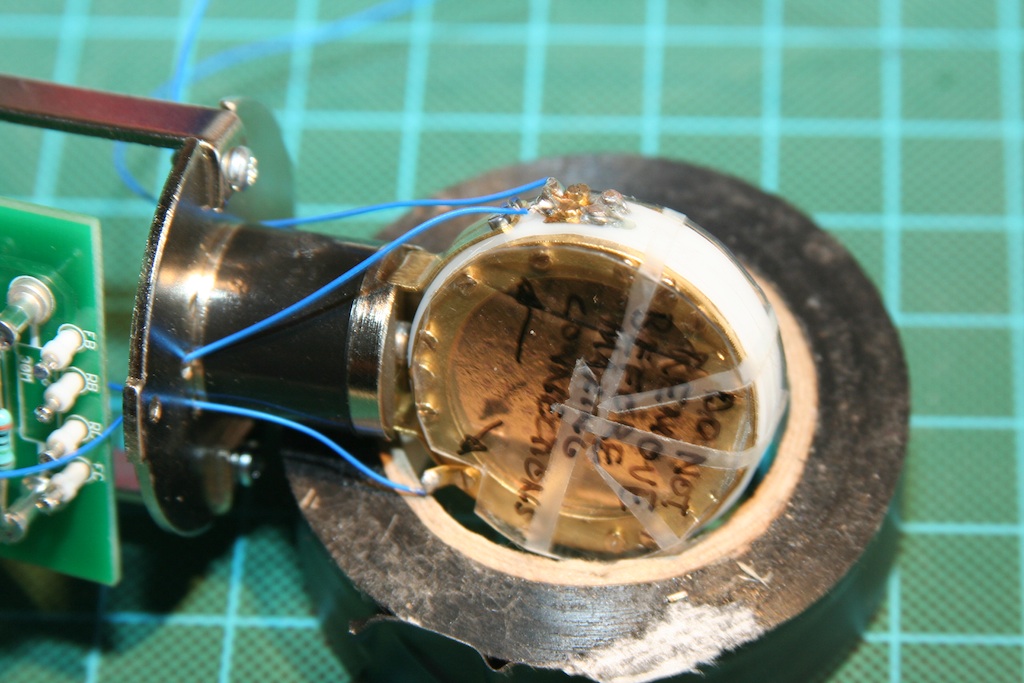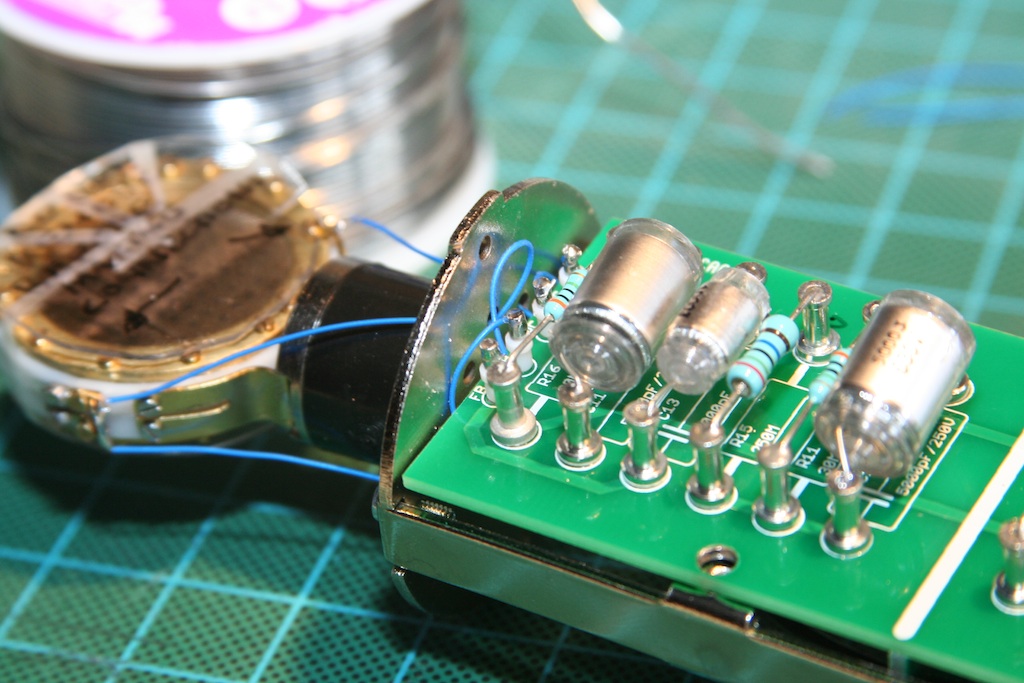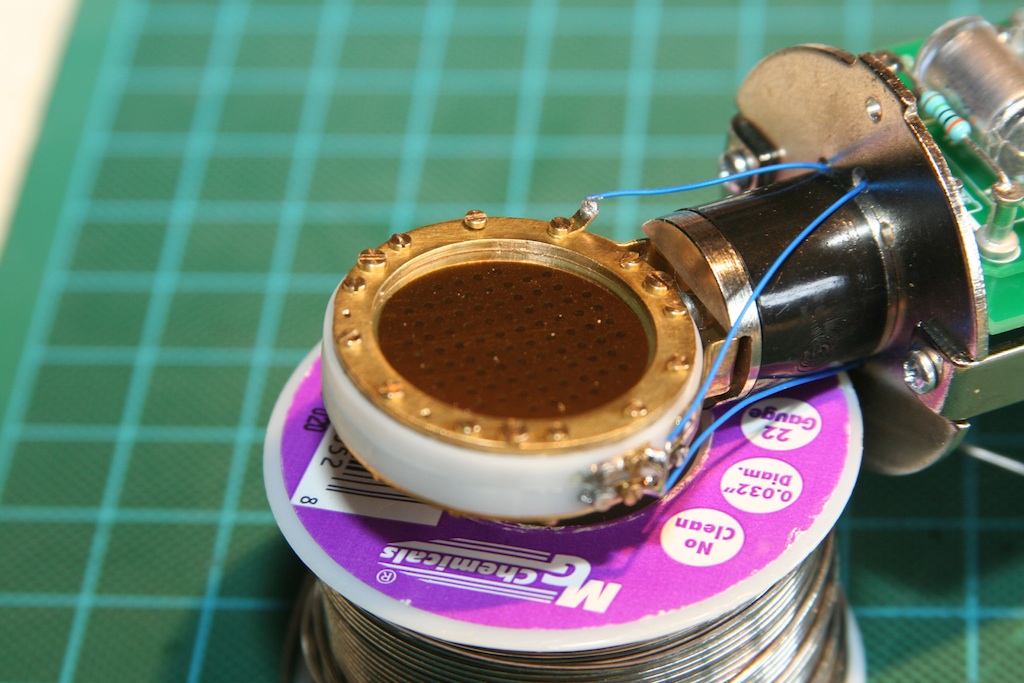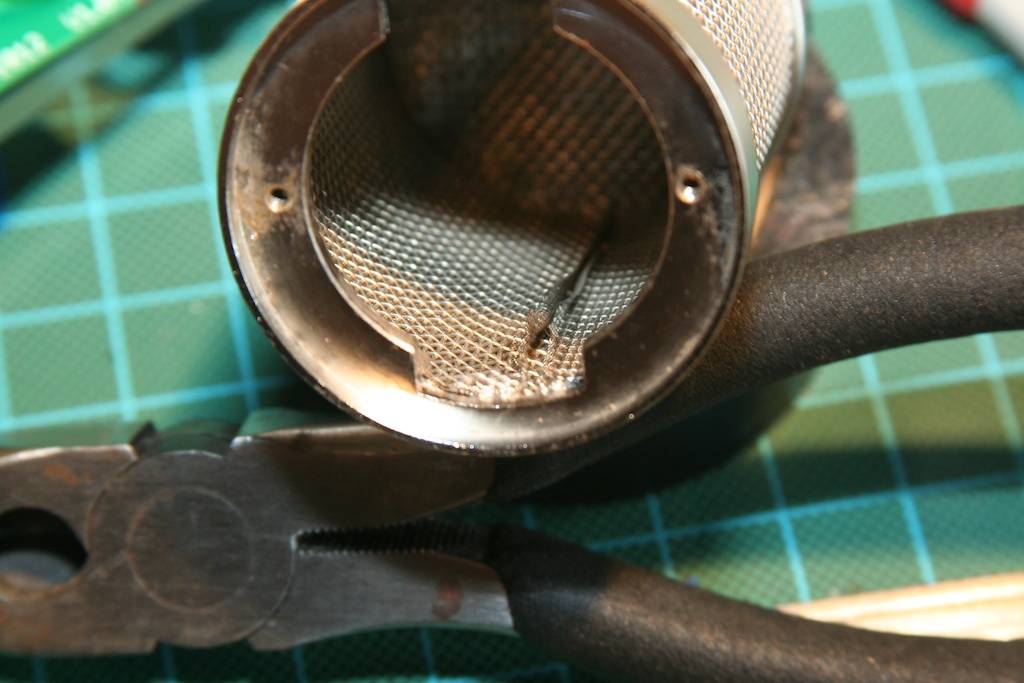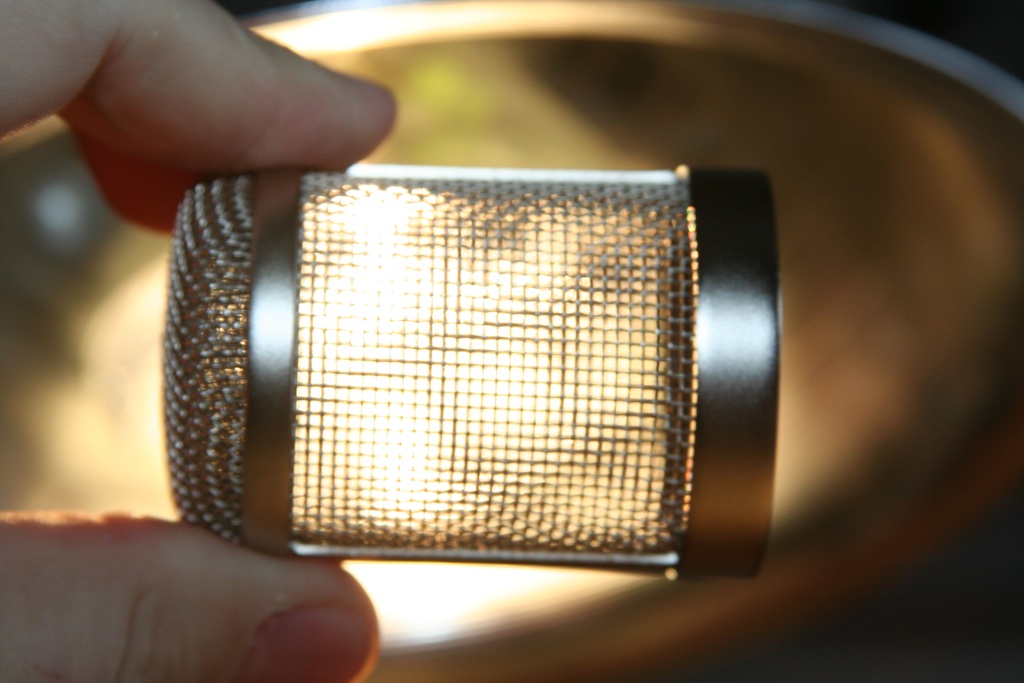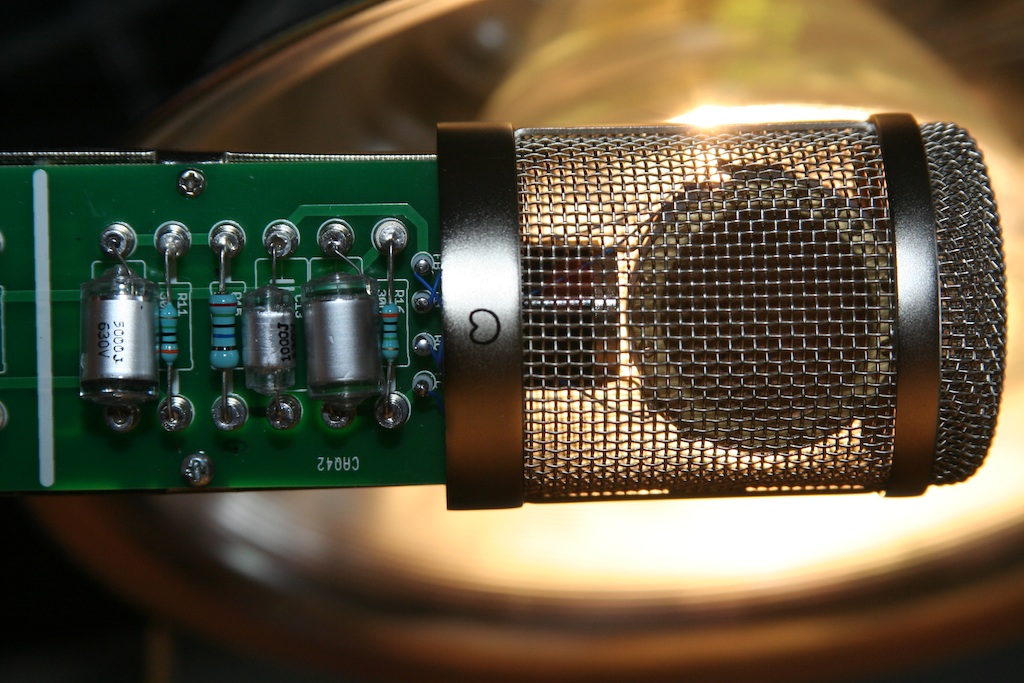Picked up the prototype from Matador today and we have it up and running in the studio with a NOS GE6072a tube provided by Christian Whitmore. He doth not mess around with his tube selection and more importantly rejection process. This tube is stable and quiet as a mouse right out of the gate. Current configuration is Tim Campbell's stock CT12 capsule, and Cinemag 2480 transformer. Oliver's stock T14 is en-route for testing.
I always expect to do a fair amount of tweaking, but this mic in its initial configuration is sounding fantastic right out of the gate with the polystyrene caps at c10, c11, c13 and the polypropylene .5uf cap @ C12 position.
Of note was the useful amount of bass present in the mic. Compared to the fine CCDA sample microphone (modded Apex 460) that matador supplied to the studio for testing (Advanced Audio capsule/transformer), I find the current prototype a bit smoother overall. . . a bit more "real" and silky in the way it handles high frequencies, a bit more forward in the midrange. . . perhaps not as fast in the transients. It sounded particularly stunning going to 2" tape.
Everything seemed to scream "expensive mic" and so it should. . .because, well, it is an expensive mic

. Note, we were testing as mono drum drum mic (center overhead) upon initial test. I left the mic in studio so the engineer can get a feel for the current configuration before we try a few other things. I'm thinking to try closer-to-original pio caps at c10, 11, 13 and 1uf value cap at C12, the AMI t14 transformer. At this point, it's really just trying stuff for the sake of trying stuff because when it really comes down to it, upon initial impression, there's not much I would see to change. Perhaps getting a nice, original C12 in the studio as a direct comparison would inform some more tweaking, but those probably had quite a range of flavors as well.
I am really excited about this project. I can only imagine how awesome this mic will sound w/ a yellow PCB.



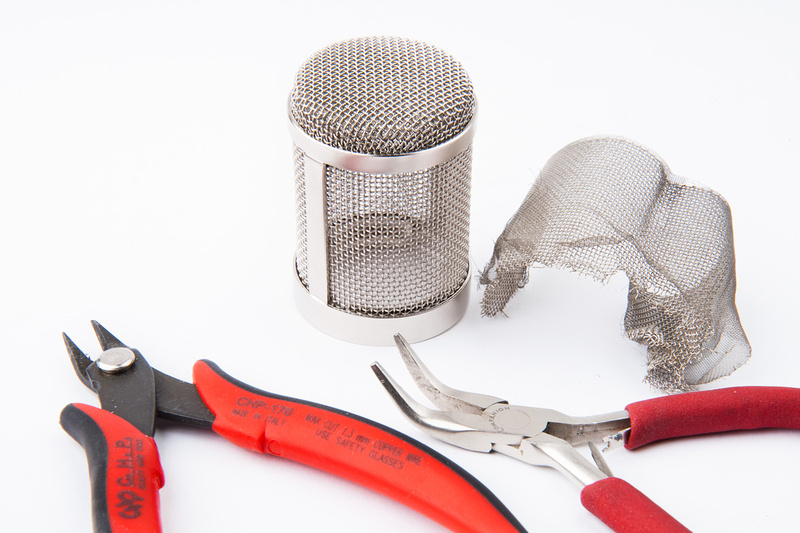
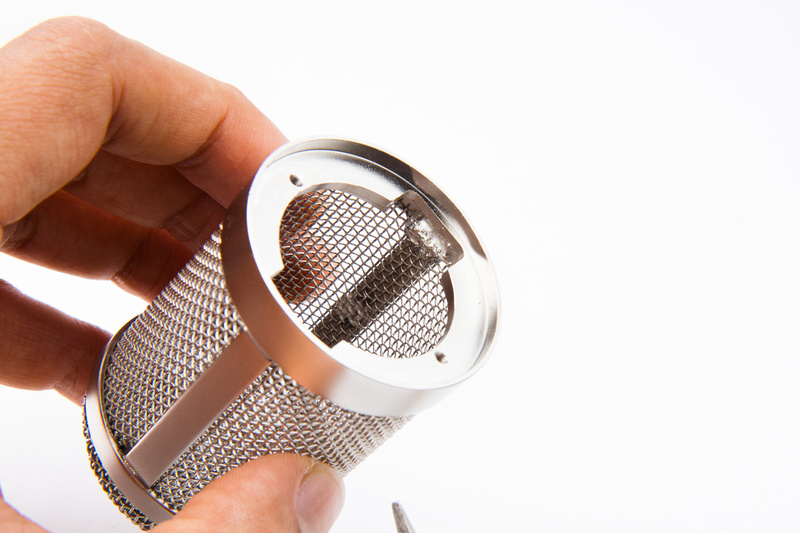


















![Electronics Soldering Iron Kit, [Upgraded] Soldering Iron 110V 90W LCD Digital Portable Soldering Kit 180-480℃(356-896℉), Welding Tool with ON/OFF Switch, Auto-sleep, Thermostatic Design](https://m.media-amazon.com/images/I/41gRDnlyfJS._SL500_.jpg)











